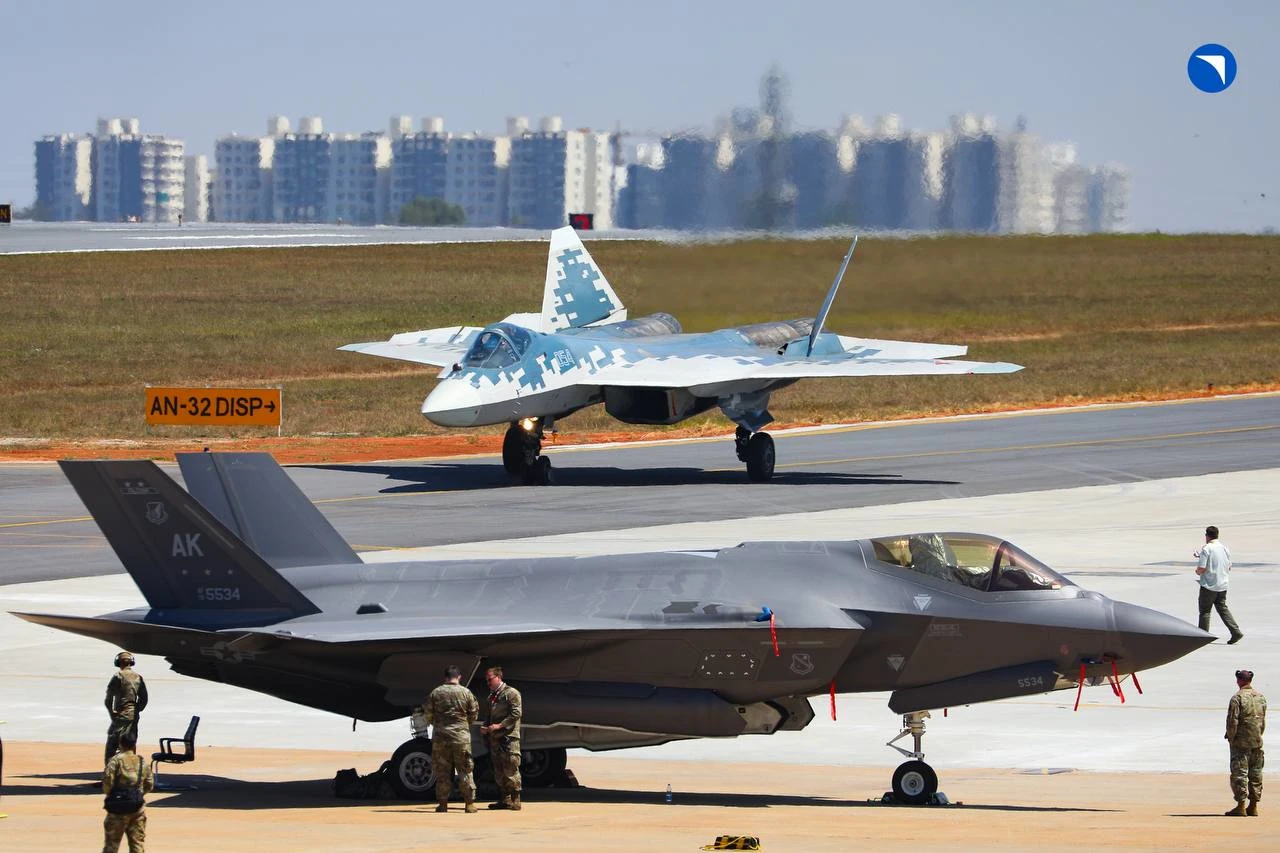The Sukhoi Su-57M, the most advanced evolution of Russia’s fifth-generation stealth fighter, represents an important breakthrough in the integration of artificial intelligence (AI) into combat aviation. Under the supervision of veteran pilot Sergei Bogdan, this AI-assisted aircraft has been recently tested. It is intended to manage various flight control, navigation, and target selection duties independently, while a human pilot remains in the cockpit to make critical decisions and release weapons. During high-risk combat scenarios, the AI system assumes responsibility for routine operations, thereby streamlining mission execution and reducing the burden on the pilot.
The Su-57M’s AI incorporation is not solely focused on automation; it also aims to improve combat effectiveness. The AI-driven avionics suite enables rapid system initialization, necessitating only a single button press to complete pre-flight tests that previously required minutes. This efficacy is translated into the capacity to respond to dynamic battlefield conditions and expedite mission readiness. With a detection range of up to 400 kilometers, the Sh121 integrated radio-electronic suite of the aircraft, which is anchored by the N036 Byelka AESA radar, offers 360-degree situational awareness. It is capable of monitoring up to 60 targets and engaging eight simultaneously. Pilots are granted a comprehensive operational perspective and the capacity to make more informed, timely decisions by the AI system, which integrates data from radar, infrared sensors, and electronic warfare systems.
The Su-57M boasts a flat fuselage, internal weapon bays, and advanced AL-51F-1 engines, in addition to avionics, which provide more lift and stability at supersonic speeds. Additionally, it features aerodynamic and stealth enhancements. These enhancements enable supersonic cruise without the use of afterburners, enhance fuel efficiency, and extend the operational range, all while maintaining a low radar cross-section. The aircraft’s reliability is further enhanced by the AI’s involvement in diagnostics and system health monitoring, which also alleviates maintenance obligations.
The Su-57M is distinguished from its global competitors by both shared trends and unique characteristics. Additionally, the F-22 Raptor and F-35 Lightning II of the United States use AI-driven systems, although with different objectives. The F-22 prioritizes cockpit automation, sensor fusion, and threat recognition, thereby simplifying pilot tasks while maintaining human oversight of all critical functions. The F-35’s artificial intelligence is significantly invested in predictive maintenance, mission planning, and sensor fusion, which optimizes the availability of the aircraft and the workload of the pilot. The robust data fusion and network-centric warfare capabilities of both American aircraft are recognized for their ability to facilitate seamless interoperability among allied forces.
In contrast, the J-20 Mighty Dragon, a Chinese aircraft, is reportedly advancing its use of generative AI. This includes the development of large language models that are specifically designed for electronic warfare and the rapid disruption of enemy communications. China’s emphasis is on the use of AI for electronic warfare, autonomous drone operations, and adaptive mission execution, although the J-20’s AI integration is not as transparent.
The Su-57M differentiates itself by its extended-range radar capabilities, aerodynamic agility, and AI-driven pilot assistance. Its open architecture is intended to accommodate future enhancements, such as the potential for manned-unmanned teaming with unmanned aerial vehicles (UAVs) such as the S-70 Okhotnik.
The S-70 Okhotnik is the most advanced stealth unmanned combat aerial vehicle (UCAV) in Russia. It is designed to use AI for various missions, such as precision strikes, electronic warfare, real-time reconnaissance, and the suppression of hostile air defenses (SEAD). Its AI facilitates autonomous navigation, target identification, adaptive threat response, and coordination with manned platforms, particularly the Su-57 fighter, in intricate manned-unmanned teaming operations. This integration enables the Okhotnik to function as a “loyal wingman,” performing duties such as intelligence gathering, deep-strike attacks, and jamming while sharing data and responding dynamically to changing battlefield conditions. The Okhotnik is a force multiplier, extending the reach, survivability, and situational awareness of Russian airpower in high-risk environments because of its sophisticated sensor suite, stealthy flying-wing design, and AI-driven mission management.
From a strategic perspective, the Su-57M is regarded as a critical component of Russia’s anti-access/area-denial (A2/AD) doctrine, as it is capable of effectively operating in high-threat environments and projecting power across contested regions. Despite sanctions and resource constraints, Russia’s dedication to sustaining technological parity with the United States and China is evident in its development. The Su-57M’s AI capabilities offer an appealing opportunity for future enhancements and operational synergy for export partners such as India, which already operates a substantial fleet of Russian-origin aircraft.
Russia’s AI advancements, despite sanctions, indicate its intention to narrow the gap with U.S. and Chinese rivals by prioritizing standoff lethality and agility over sensor fusion or fleet scale. The Su-57M improves Russia’s capacity to project power in contested regions such as the Arctic and Eastern Europe by reducing vulnerabilities to NATO’s fifth-generation fleets through its stealth and long-range radar. Although it may not yet match the F-35’s sensor fusion or the scale of Western fleets, the Su-57M is indicative of Russia’s priorities: adaptability under duress, standoff lethality, self-reliance, and speed.
In summary, the Su-57M’s AI integration is a significant milestone in Russian aerospace, providing a combination of sophisticated sensor capabilities, agility, and automation. The Su-57M is a formidable competitor in the evolving landscape of next-generation air combat due to its tailored approach to AI, stealth, and operational flexibility, which distinguishes it from its Western and Chinese rivals, who specialize in data fusion and networked warfare.
Official Website of Youtube Channel – Altitude Addicts
